Insectivorous plant: Insectivorous plants with clever pitfalls and traps catch and eat insects and other creatures. Insectivorous plant, also known as a Carnivorous plant.
Insectivorous Plant Name
The more than 600 identified species of carnivorous plants are a tremendously diverse group, with nothing more in common than their carnivorous nature in some situations. Insectivorous plants are photosynthetic plants that evolved to augment their nutrition in low-nitrogen conditions by catching and devouring animal meat, such as that of insects. Read the full article to learn about Insectivorous plant Examples, Characteristics, and Types.
What are Insectivorous Plants Meaning?
Insect-eating plants are known as insectivorous plants, and they obtain nutrition by ingesting insects and other creatures. These plants thrive in humid environments with plenty of sunlight and moisture. They live in nitrogen-deficient soil. Its book-like leaves have a fragrant odor and are separated into two lobes, with little trigger hairs on the lobes. These are touch-sensitive; when an insect-like fly lands on them, they bend, opening the ion channels at the base of the hair and producing electrochemical signals that cause midrib cells to alter, causing the lobes to close. Carnivory in plants has developed six times independently across many families and orders.
Insectivorous Plant Examples
Carnivorous plants have the most odd low-nutrient adaptations. These plants gain nutrition by catching and digesting numerous insects, as well as small frogs and animals on occasion. It is not unexpected that the most common environment for these plants is in swamps and fens, where nutrient concentrations remain low but water and sunlight are ample during the growing season. Let us talk about it. Following are some examples of insectivorous plants:
-
Venus Flytrap –
-
- These plants have a hair-lined large mouth. These hairs are also equipped with a heat sensor. A fire, such as one of the adjacent matches, forces them to snap shut, making the plant more resistant to forest fires. These are delicate structures.
- When an organism comes into contact with this hair, the mouth snaps shut, capturing it. After the organism has been digested, the leaves of this plant reopen to trap another victim. The first and third picture below is of Venus Flytrap.
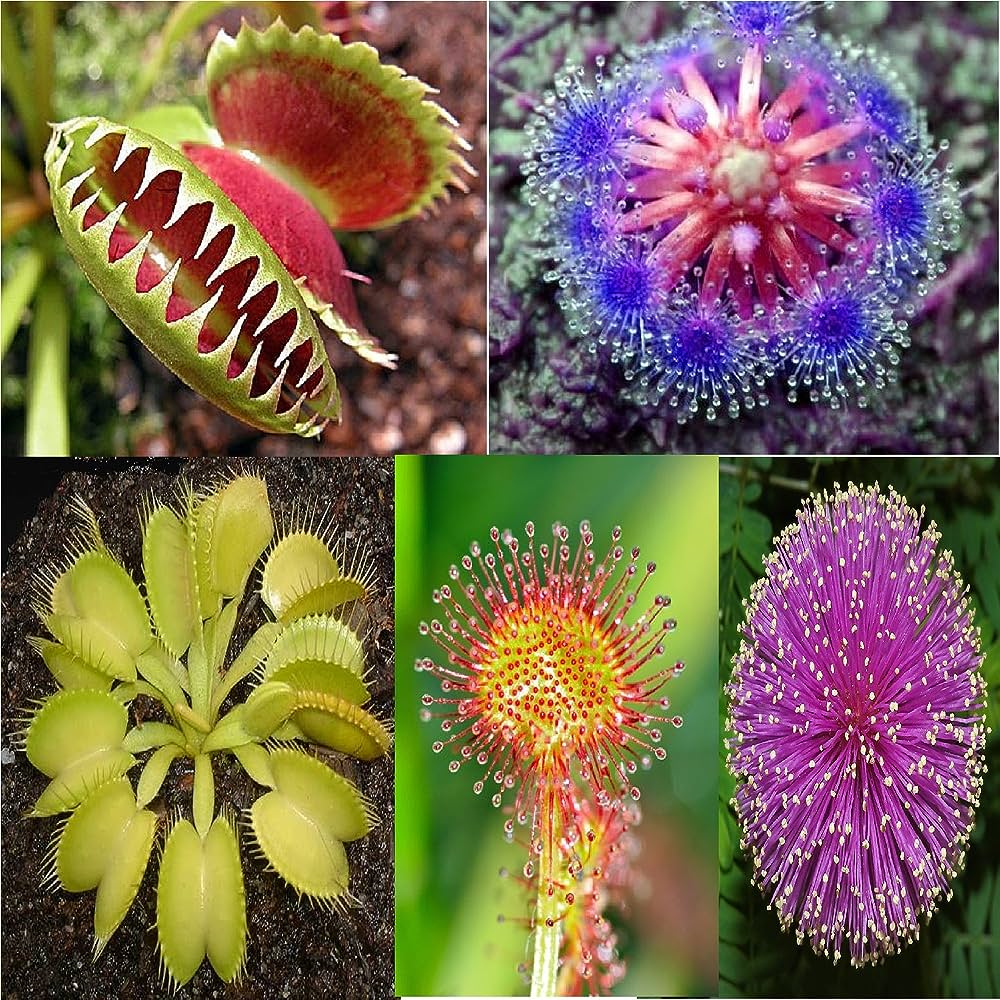
-
Drosera
- The name of these lethal plants comes from the sticky drips on their leaves that mimic sundew. These dew drops attract flies, insects, and moths, and then the leaves fold in on the prey to digest it.
- There are more than 200 Drosera species recognized to date. They appear to be drenched. This look is caused by a sticky digesting enzyme that both fools and attracts insects.
- The Cape Sundew (Drosera Capensis) is often regarded as the best carnivorous plant for a novice. Sundew plants are easy to grow in non-freezing areas on windowsills or in outdoor bogs.
- Sundews are also incredibly satisfying to grow in artificial light, highlighting their gem-like beauty to the utmost. The 2nd picture in the above image is Drosera.
-
Pinguicula
- Butterworts are another name for these. They use sticky, glandular leaves to attract, capture, and digest insects in order to augment the inadequate mineral nutrition they receive from their surroundings.
- To lure prey, they generate bright, vibrant blossoms. They have sticky dewy leaves that capture insects. During the winter, these plants go dormant.
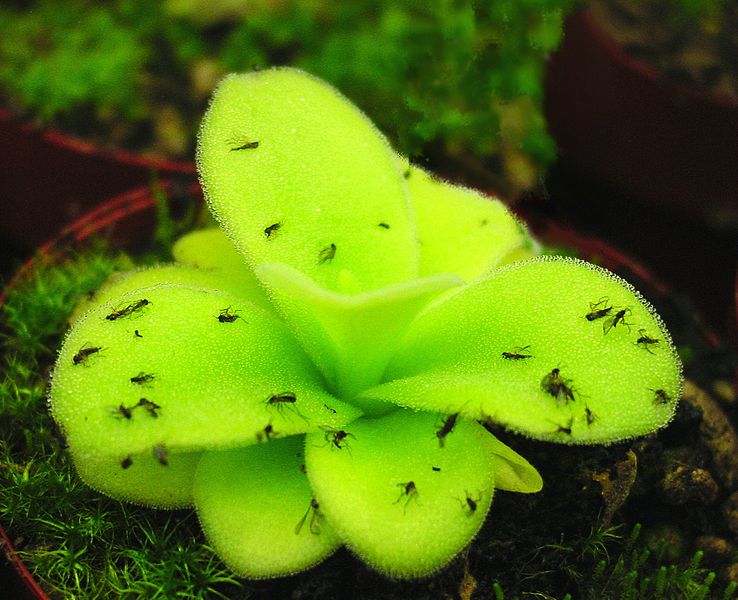
-
Nepenthes
- The pitcher plant is another name for Nepenthes. This is prevalent throughout Asia, including Sri Lanka and Australia. This plant is made up of a pitcher that produces liquid on its own.
- The scent of the plant attracts the insects. Once the insect is captured and begins to move. The digesting juice is secreted by the plant. The organism digests and absorbs the nutrients.
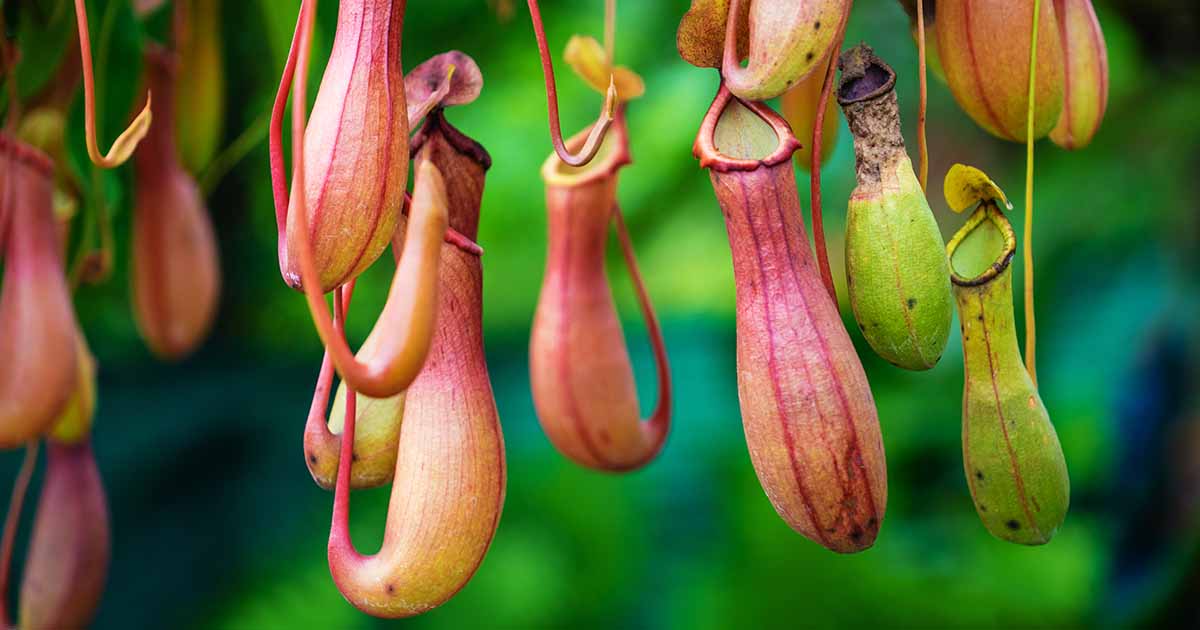
-
Genlisea
- Genlisea are rare, small, partially aquatic, tropical carnivorous plants that look similar to terrestrial bladderworts (Utricularia) but have peculiar and unique subterranean traps known as “spiralling lobster traps.”
- It is also known as the corkscrew plant, and it is often found in damp terrestrial to semi-aquatic environments.
- It has two types of leaves: underground leaves that collect water from the soil and hold the plant securely in the soil, and above-ground leaves that provide shade.
- These underground leaves congregate to form hollow tubes. Insects enter these tunnels with the help of water flow but cannot exit.
- Genlisea, like terrestrial bladderworts, lacks roots in favor of a slender stem that branches into numerous forked, spiraling snare leaves (rhizophylls). The leaves have an oval spatulate shape and form a tiny rosette. Flowers are often yellow or violet in colour, with a spur and 1-2+ cm flowers per stem.
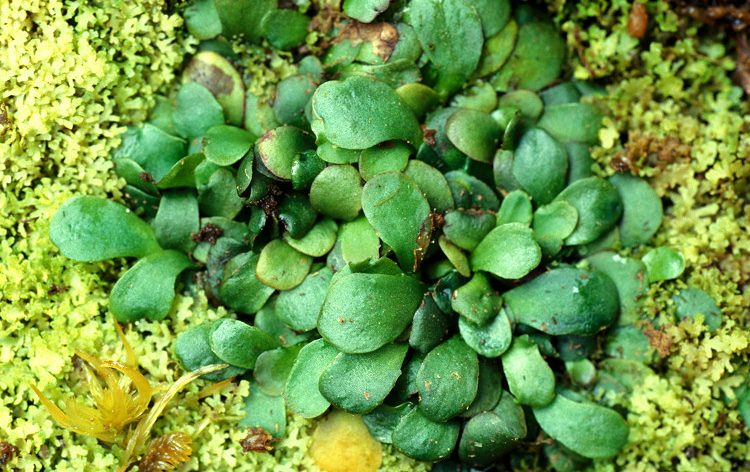
Insectivorous plant Characteristics
Insectivorous plants have certain different traits, which are briefly discussed here.
- Nitrogen Deficiency- They are located in areas where there is a dearth of some nutrients, particularly nitrogen, and hence confront a nutrient shortage. As a result, they have evolved into insect-catching or eating plants that can absorb nutrition through their leaf structures.
- Wet and moist Environments- Insectivorous plants exist in moist, humid, wet, and acidic soil that is nutrient-deficient. nutrient-deficient areas, such as marshes, bogs, wetlands, coastal plains, and so on. The majority of these plants are located in Australia, tropical areas, and North America.
- Attractive Nectars– Insectivorous plants are shiny and colorful; some have a sweet or pleasant odor and flavored nectars that attract insects. As a result, when insects visit the plants, they become entangled and consumed by the plants’ fluids or enzymes.
- Unesscapable Trap – If the insects fit properly within the leafy structure of the insectivorous plants, they have no possibility of escaping. Smaller insects can sometimes escape from traps. The insectivorous plants’ mouths have hair-lined edges that snap or close as soon as the insect encounters the hair, capturing the insects. Genlisea plants show unique subterranean traps known as “spiraling lobster traps”. Some plants have a sticky fluid that makes an insect immobile. When insects contact the hair and the flap opens, the majority of them are unable to leave.
- Digestive Tract like humans – Insectivorous plants release digestive fluids including enzymes that aid in disintegrating the insect for absorption. Some carnivorous plants include bacteria or mites within their digestive tract that imitate human digestive activities.
Insectivorous plant Types
In a single bog, thirteen species of carnivorous plants were discovered. The roots of most plants take nitrogen from the soil. Carnivorous plants, on the other hand, take nitrogen from their animal prey via specially modified trap leaves. Plant leaves have been adapted to resemble traps. Insectivorous plants use enzymes and microorganisms to chemically degrade their prey. The final products of the chemical reaction undergo absorption by the plants, allowing them to survive in adverse conditions. The following are the various types of traps discovered in insectivorous plants:
- Snap traps –
These traps can be found in Venus flytraps. They quickly close their leaves when the victim meets the trigger hair. Steel traps are another name for it. Venus flytrap and waterwheel plants’ snap traps are hinged leaves that close when trigger hairs are touched.
- Pitfall traps –
Pitfall traps can be discovered in pitcher plants. Trapping mechanisms are classified as active or passive based on whether or not they move to capture the prey. They are made up of a hollow leaf with a lid, which is filled with liquid to break down the prey.
- Bladderwort traps –
Bladderwort traps are quite prevalent in Utricularia. To suck the small creatures, they employ a partial vacuum. Suction traps, which are peculiar to bladderworts, are highly adapted leaves that resemble a bladder and have a hinged door lined with trigger hairs.
- Flypaper traps –
Flypaper traps are also known as sticky or adhesive traps. Sundews and butterworts have stalked glands that emit sticky mucilage, which acts as a flypaper trap. These catches are adhesive and sticky. The stalked glands on the leaves exude sticky mucilage.
- Lobster traps –
Lobster traps can be discovered in corkscrew plants. Corkscrew plant lobster-pot traps are twisted tubular tunnels coated with bristles and glands. They have hair that points downward, pushing the prey deep inside the trap.

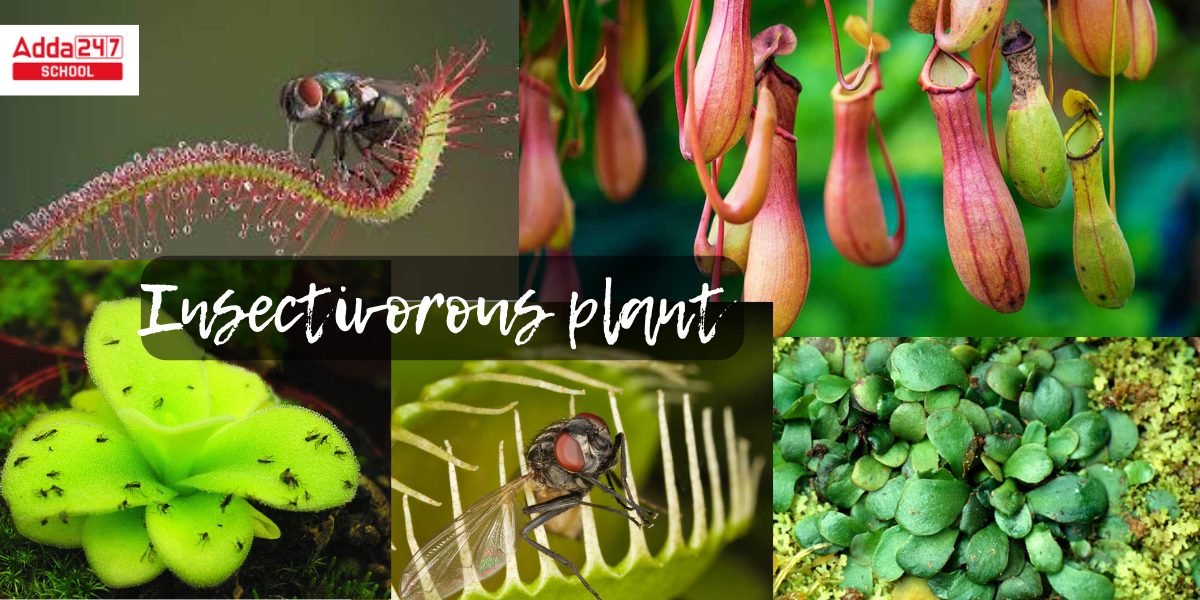







 CBSE Admit Card 2026 for Private & R...
CBSE Admit Card 2026 for Private & R...
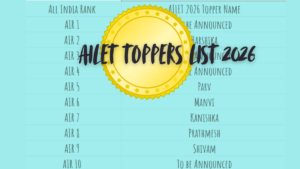 AILET 2026 AIR 1: Check Full Toppers Lis...
AILET 2026 AIR 1: Check Full Toppers Lis...
 AILET Result 2026 OUT, How to Download S...
AILET Result 2026 OUT, How to Download S...














